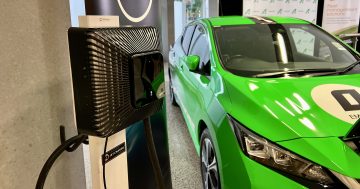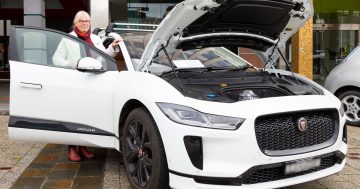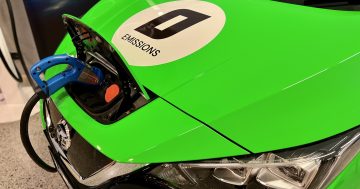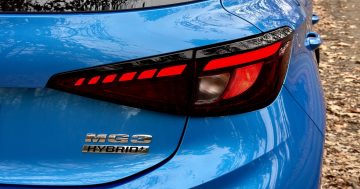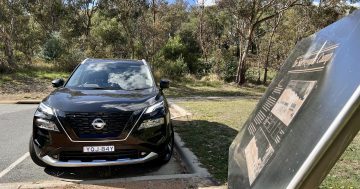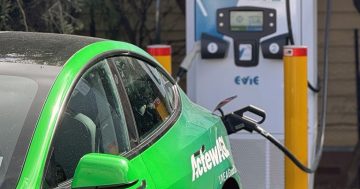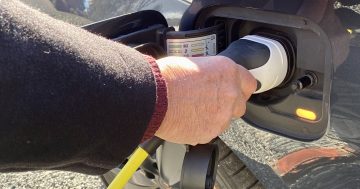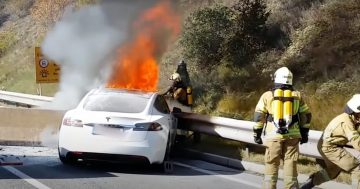
David Haynes and his family with their new electric vehicle. Photo: Thomas Lucraft.
Buying an electric vehicle (EV) was always a long-held dream of David Haynes, but never something he’d envisaged doing right now simply because he assumed it would be out of his price range.
But three months ago David and his wife, Sharn, became the proud owners of a secondhand 2016 30kWh Nissan Leaf that only set them back $27,000 including 12 months’ registration and insurance.
Until their purchase, the couple and their two boys, aged four and five, were a one-car family. But, like many, they started to find the juggle between kindergarten and child care drop-offs to different locations, the work commute and various extracurricular afternoon activities was too much to manage with just the one vehicle.
They were motivated to do some research into EVs as they were keen to minimise the environmental impact that owning and driving a second car would entail.
With two cars, the morning and evening rush has become less hectic, and the kids are suitably impressed with their new car, which they’ve nicknamed ‘electric blue’.
David says it has taken a little bit of time to get used to how quiet the Nissan Leaf is, as well as how zippy.
“It’s really smooth and surprisingly fast when it takes off at the lights,” he says.
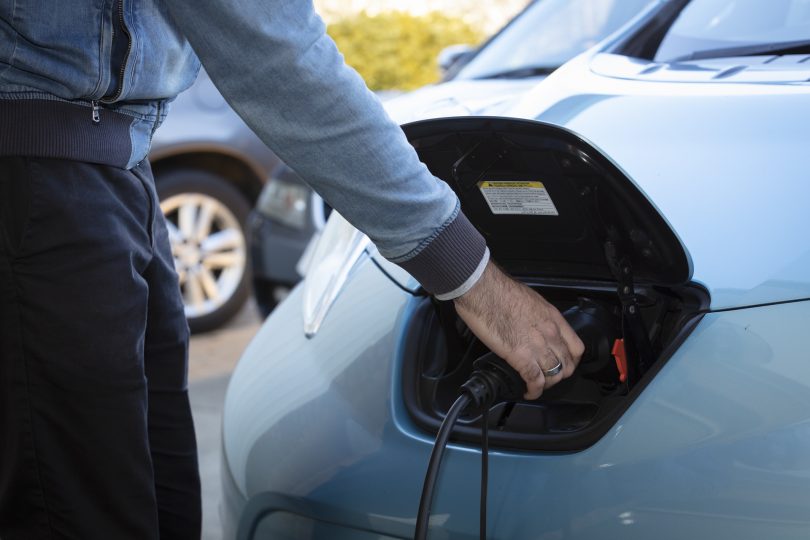
A bit of planning is required to organise the electric vehicle’s charging schedule. Photo: Thomas Lucraft.
One safety feature that comes with the vehicle is a slight beeping noise when reversing to warn pedestrians, simply because it is so quiet.
David says they quickly learned that unlike a traditional petrol vehicle, a little bit of planning is involved, both with its charging and driving schedule.
The EV has a range of 150km when fully charged so the couple generally decide every evening who will be doing the most driving the next day and they take the electric car.
David explains he wouldn’t quite be ready to make the switch to owning two electric cars because with a 150km range, trips to the NSW South Coast to see his parents who live there would likely be out of range, even when the supercharger network is factored in.
This is also because the range is reduced when going uphill or highway driving.
David says initially there was a sense of ‘range anxiety’ about getting caught out somewhere with a flat battery so when he and Sharn started exploring the market, they thought they’d need a car with a bigger battery.
But this comes at a cost and after talking through their actual needs with the team at Ion DNA electric vehicle showroom in Canberra, they decided the extra range wasn’t required because the new car would be used as their main run-around town car, and should the need arise, they still have their older petrol car for any long trips.
“I haven’t yet had to worry too much about driving to conserve power as much as possible,” says David.
“We are pretty conservative with how we drive it, and generally don’t like to see the range get too close to the bottom.”
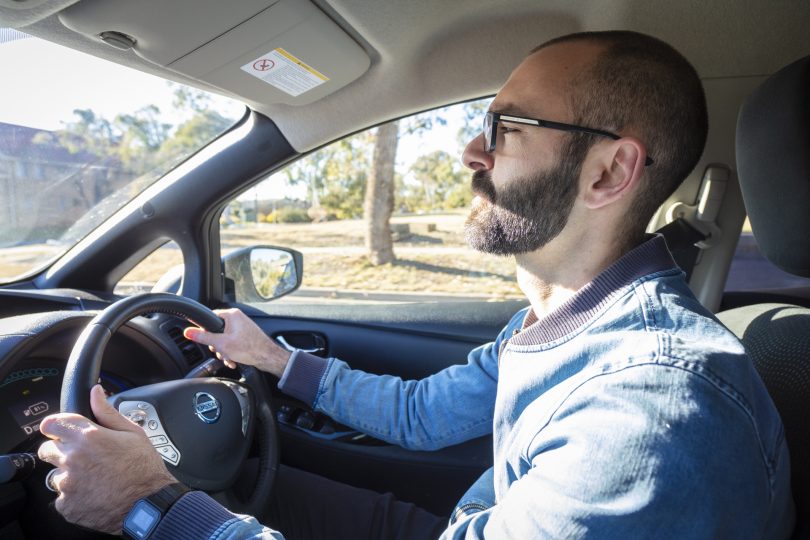
David Haynes feels right at home in his Nissan Leaf electric vehicle. Photo: Thomas Lucraft.
In terms of its charging schedule, David and Sharn charge the 30 kWh battery to about 80-90 per cent so its health is maintained.
“It’s a bit like with your phone – if you leave it on charge all the time, you simply degrade the battery quality,” he says.
“So we generally plug it in to charge for around four or five hours in the evening, depending on how much driving has happened that day.”
The Nissan Leaf model they own also has a built-in charging timer which means you simply set a routine charging schedule on particular evenings of the week and then plug it in and let it go.
In terms of an impact on electricity bills, it’s been minimal and more than offset by the reduction in petrol costs. They also haven’t yet needed rapid or fast chargers, although they are prepared.
Originally, David and Sharn found that there really wasn’t a huge secondhand electric vehicle market in Canberra, and most of the dealers they approached didn’t know a huge amount about things such as the health of the battery.
With free registration now on offer from the ACT Government, it’s likely there will be more EVs gracing Canberra’s streets sooner rather than later.
See the full range of Ion DNA’s electric vehicles online.












